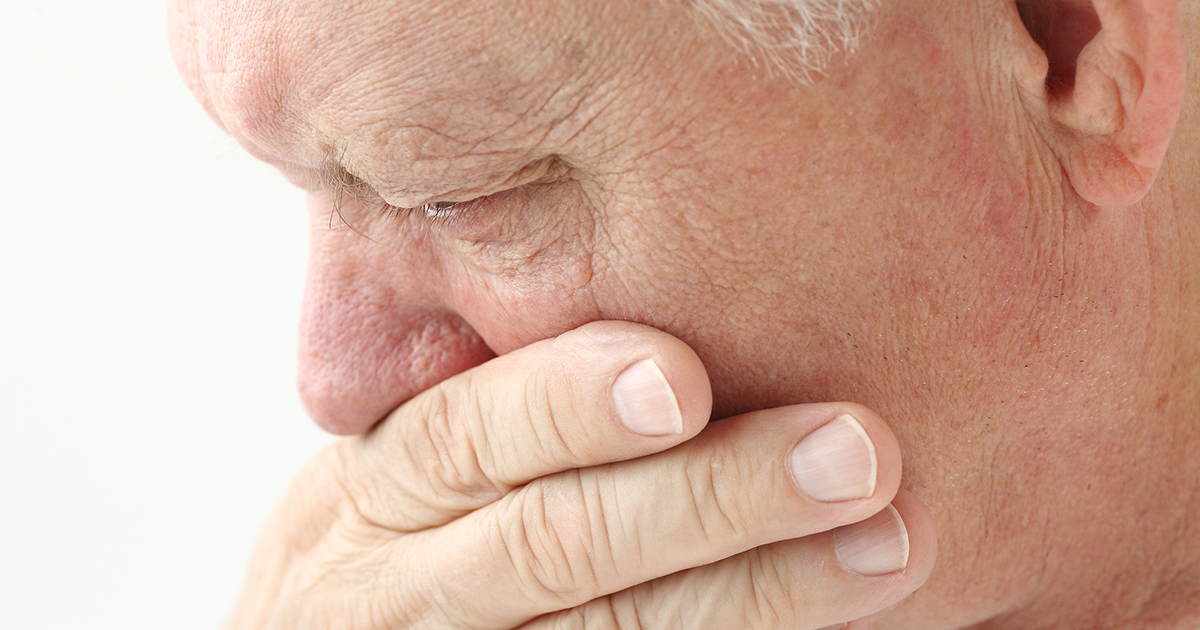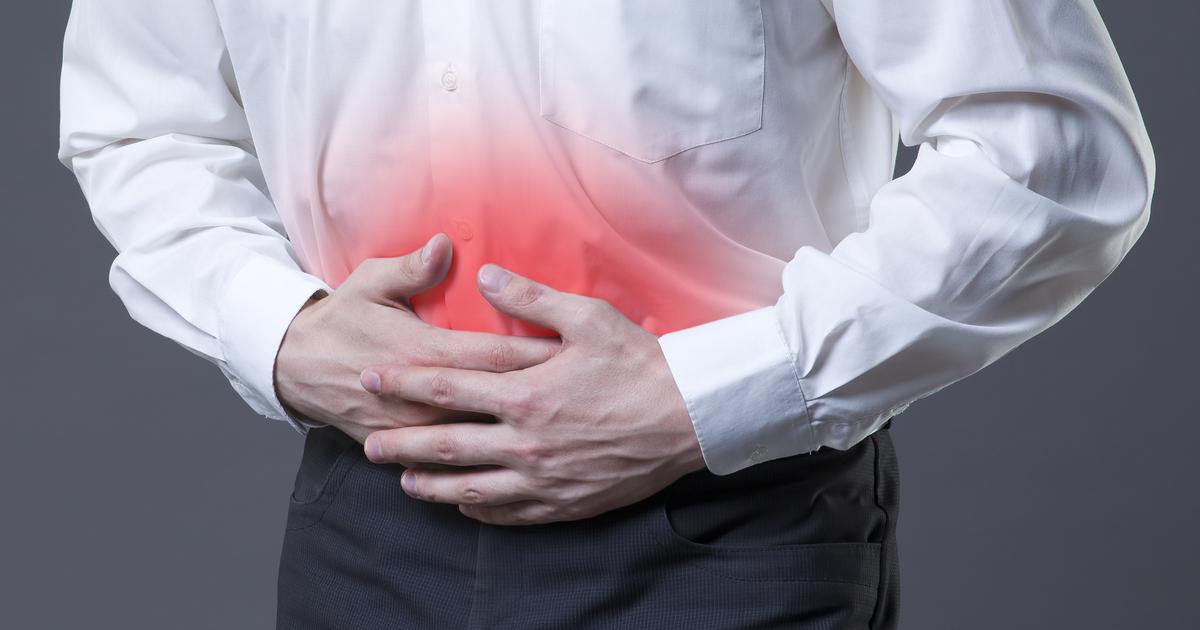Most Common Symptoms Of A Heart Attack
A heart attack is a medical emergency where the flow of blood to the muscle tissues of the heart becomes suddenly obstructed. Without a blood supply, the muscle tissues do not receive oxygen. The muscle tissues begin to die of oxygen deprivation if blood flow is not restored within several minutes. When these tissues die, the heart muscle is unable to continue beating.
This medical emergency is commonly caused by cardiovascular disease, where the arteries that supply the heart muscle with blood become narrowed by plaque. A heart attack may also be the result of coronary artery spasm. Some individuals have a higher risk of a heart attack, including those who are smokers, have hypertension, are obese, have diabetes, and those who eat a high-fat diet. The symptoms that occur during a heart attack differ from one individual to the next. However, there are a few symptoms are more prevalent than others.
Pressure Or Pain In The Chest

Pressure or pain in the chest can indicate n individual may be having a heart attack. The majority of heart attacks are associated with sensations of discomfort or pain in the center or left side of the chest. This discomfort or pain may have a long continuous duration, or it may go but always return. Some individuals who have experienced a heart attack describe this chest pressure or pain to feel similar to digestive symptoms, like indigestion or heartburn. The feeling is often described by individuals as heaviness, fullness, squeezing, pressure, or constricting pain. The pain can exhibit qualities such as burning, sharp, or dull. Some describe it feeling like a bra that is too tight or an elephant sitting on their chest. Chest pain or pressure from a heart attack typically becomes worse when increasing activity and may lower in intensity with rest. More individuals affected by a heart attack describe the feeling in the chest as pressure or discomfort more than an actual painful sensation. Chest pain from a heart attack is usually felt throughout the patient's chest, rather than focal at one point. Pain from a heart attack does not typically occur suddenly but develops gradually with time.
Keep reading to learn more about the classic symptoms of a heart attack now.
Pain In The Neck, Jaw, Shoulder, And Arms

Individuals having a heart attack may experience pain in the neck, jaw, shoulder, or arms. The pain that occurs from a heart attack in areas other than the chest tends to exhibit differences with gender variation. The pain tends to radiate around the body in a different pattern for men and women. Men are more likely to experience the radiation of pain from their chest to their left shoulder, and either up to their chin or down their left arm. Women describe a pattern where the pain is less intense and moves to either the right or left shoulder blade and arm. Pain in women during a heart attack can radiate up their neck and chin, or through the upper back. Women also report feeling pain sensations in their abdominal region more than men do. The radiating pain in an individual having a heart attack is more likely to be accompanied by other symptoms in women, such as nausea, pain in the jaw, shortness of breath, and vomiting. Many individuals forget the heart is a muscle itself, so the pain that occurs during a heart attack will feel somewhat like pain that occurs with ischemia of other muscle tissues.
Get the details on another common heart attack symptom now.
Shortness Of Breath

Part of the function of the heart is to pump blood from the veins to the lungs so it can undergo carbon dioxide exchange for oxygen. The blood then moves back to the heart, where the muscle pumps it back out to the tissues around the body. When the heart is unable to beat properly, blood can back up in the veins. Oxygen-poor blood is unable to reach the lungs for reoxygenation effectively. The affected individual's brain detects the low oxygen levels and tells the lungs to breath faster and harder in attempts to increase the intake of oxygen. This mechanism is meant to concentrate more oxygen into the blood to improve the conditions of poor oxygen saturation. However, larger amounts of oxygen reaching the lungs cannot provide the rest of the body with a greater amount of oxygenated blood if the heart is unable to pump it back out. During a heart attack, an affected individual may describe feeling like they are unable to breathe in enough air or are short of breath.
Read more about the major symptoms of a heart attack now.
Feeling Lightheaded

Lightheadedness is a symptom of a heart attack that typically occurs more in women than in men. Brain tissues are some of the most demanding tissues in the body when it comes to their oxygen and nutrient requirements. During a heart attack, the heart fails to pump enough oxygenated blood out to the rest of the body. The brain does not receive enough blood, and the tissues become starved of oxygen. The cells start to shut down and can cause the affected individual to dizzy or lightheaded. Medically, this malfunction is known as a drop in blood pressure. These symptoms typically occur when the affected individual is in an upright or standing position, as the force of gravity combines with the insufficient beating of the heart to inhibit the proper amount of blood from reaching the tissues in the brain. Nausea is often accompanied by both dizziness and lightheadedness that occur with a drop in blood pressure. Therefore, nausea may also accompany lightheadedness during a heart attack.
Discover another common symptom of a heart attack now.
Cold Sweat

Patients having a heart attack may break out in a cold sweat. Sweating is a normal occurrence in environments of high temperature and when an individual is running a fever. However, suddenly breaking out in a cold sweat can without reason is concerning. A large portion of individuals who go to the emergency room while having a heart attack were prompted to seek help by sudden and unusual sweating. This symptom occurs because the heart tissues do not receive enough oxygen to meet their demand, and they stop functioning during a heart attack. When this occurs in the body, surge of biochemical and inflammatory events that include the activation of the affected individual's fight or flight response ensue. The sympathetic nervous system regulates the fight or flight response and numerous other autonomic functions. It is the surge of hormones in this response that cause an individual to break out in cold sweats during a heart attack.
Uncover additional symptoms associated with a heart attack now.
Nausea

A heart attack occurs when a blood clot obstructs the flow of blood through an individual's coronary arteries that supply the tissues of the heart itself. At any given time, between twenty and twenty-five percent of the oxygen-rich blood pumped by the heart is allocated to the digestive system. However, the flow of blood to an individual's digestive system doubles in volume following the consumption of a meal. The same blood clots that produce a heart attack can produce the same effects in the digestive system organs, like the stomach and intestines. This malfunction can cause food to stagnate in the digestive tract, allowing bacteria to overgrow and even causing a bowel obstruction. Bowel obstructions and bacterial overgrowth in the intestines can produce symptoms like bloating, nausea, and vomiting. When an individual experiences a heart attack, blood can become shunted away from the digestive tract to supply more vital organs in the body, which can also produce nausea.
Get more information on common symptoms associated with a heart attack now.
Heartburn Or Indigestion

An individual experiencing a heart attack may feel as if they are being affected by indigestion or heartburn. The type of chest pain that develops during a heart attack is pressure and discomfort similar to feeling too full, having indigestion, or experiencing heartburn. Because a heart attack can produce symptoms like indigestion and heartburn, an individual must know the other symptoms that are likely to occur during a heart attack. A racing pulse, jaw pain, shoulder pain, breathlessness, nausea, vomiting, cold sweats, excessive sweating, unusual fatigue, lightheadedness, dizziness, and fainting accompanied by heartburn or indigestion are indicative of a heart attack. Heartburn and indigestion not associated with or caused by a heart attack are usually accompanied by chest pain that worsens upon lying down, burning feelings in the throat, difficulty swallowing, and an acidic taste in the mouth.
Read more about other warning signs of a heart attack now.
Unusual Fatigue

An individual having a heart attack may experience unusual fatigue. Unusual fatigue occurs when there is not enough energy being produced by the cells that make up an individual's tissues to meet the demand of their body. Cells require a constant and adequate supply of glucose and oxygen to produce usable cellular energy or ATP. During a heart attack, the heart is not receiving an adequate supply of blood. This malfunction causes the heart to be unable to pump blood at a normal rate, reducing the amount of oxygenated blood that can reach all of the body tissues. Without enough oxygenated blood, the cells are not able to produce the quantity of ATP needed to carry out normal functions. As a result of the shortage of usable cellular energy from a heart attack, the body allocates the nutrients and energy it does have away from the peripheral muscles to the vital organs. This reallocation of nutrients and cellular energy causes an affected individual to feel unusually fatigued having a heart attack.
Get more details on the serious symptoms of a heart attack now.
Abdominal Pain

An individual who experiences a heart attack may develop abdominal pain due to problems with the flow of blood to their digestive organs. The buildup of plaque in the arteries can cause the arteries that supply the digestive tract with blood to become too narrow or fully blocked. This blockage is the same mechanism that occurs in the coronary arteries that produces a heart attack. When blood supply is cut off from the muscular tissues of the heart or digestive organs, the cells that make up these tissues begin to die. This tissue necrosis is what produces a type of pain known as angina. Abdominal pain that occurs during a heart attack is the equivalent of angina that occurs in the digestive organs. Abdominal pain related to poor blood flow to the digestive organs may also be the result of the redirection of blood away from the area to supply other vital tissues during a heart attack.